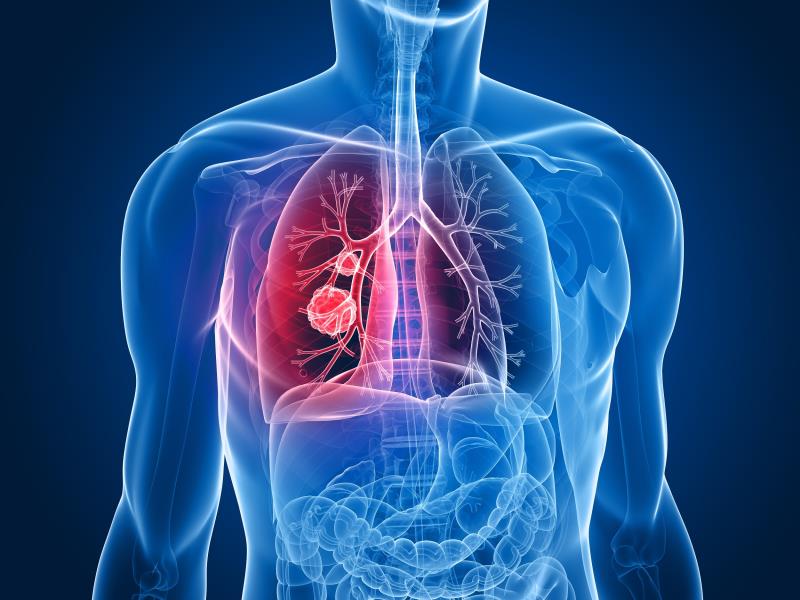Pembrolizumab not cost-effective for NSCLC in SG





Pembrolizumab monotherapy shows superior efficacy to standard chemotherapy for non-small cell lung cancer (NSCLC), according to a new Singapore study. However, its current pricing in the country makes it the less economical option.
“Pembrolizumab is increasingly used by oncologists in Singapore for previously untreated patients with advanced and/or metastatic wild type NSCLC with programmed death ligand 1 (PD-L1) tumour proportion score (TPS) >50 percent due to its superior efficacy in improving overall survival compared to standard chemotherapy,” said researchers. “However, its high cost currently limits treatment access for most patients.”
Base-case analysis showed that over a 10-year period, patients treated with pembrolizumab enjoyed more quality-adjusted life-years (QALYs), but at higher financial costs relative to standard chemotherapy. [J Med Econ 2020;doi:10.1080/13696998.2020.1775620.]
The incremental cost-effectiveness ratio (ICER) was calculated to be SGD 167,692 per QALY gained, 95 percent of which was driven by the large cost difference between pembrolizumab and standard chemotherapeutic agents. One-way sensitivity analysis further revealed that the cost of pembrolizumab strongly affected the model.
However, time horizon also appeared to be an important influencing factor for the ICER. When time was reduced to 5 years, the calculated ICER jumped to SGD 249,255 per QALY gained. There was no instance where ICER dropped to below SGD 100,000 per QALY gained, except when reducing the cost of pembrolizumab.
Probabilistic sensitivity analysis also showed that at a hypothetical willingness-to-pay (WTP) threshold of SGD 100,000 per QALY, pembrolizumab had a 0-percent probability of being cost-effective.
This was confirmed by a cost-effectiveness acceptability curve, which showed that pembrolizumab only stood a chance against standard chemotherapy when the WTP threshold was raised to SGD 170,000 per QALY, “which is not considered to be an acceptable use of healthcare resources in the local context,” the researchers said.
Scenario testing of the model assumptions demonstrated that shortening the median follow-up time resulted in a better, but still unfavourable, ICER estimate of SGD 145,774 per QALY gained. Limiting treatment effect to 2 years, however, worsened the estimate to SGD 341,073 per QALY gained.
Only when cutting the costs of pembrolizumab by 20 percent of 70 percent did the ICER estimates drop to acceptable levels, at SGD 136,608 and SGD 58,888 per QALY gained, respectively.
“There are a number of limitations of our economic model. Firstly, the key clinical and utility inputs were obtained from studies conducted predominantly in Western countries,” the researchers said, adding that country-specific clinical data remains unavailable in the Singapore setting. Other shortcomings include a short median follow-up for extrapolation and the assumption of a fixed 2-year treatment duration.
Nevertheless, the present study suggests that “pembrolizumab may not represent good value for limited healthcare dollars compared with platinum-based chemotherapy in Singapore,” they added. “These findings will be useful to inform local clinical decision-making and national funding decisions about the use of pembrolizumab for advanced NSCLC.”